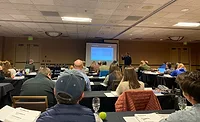Tips for Helping Scientists Understand Drillers and Vice Versa
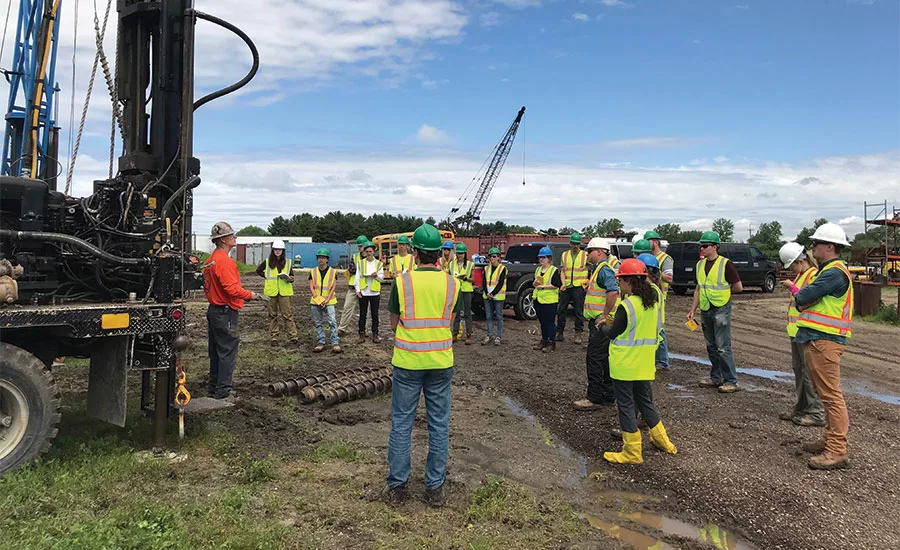
Dave Bowers, an instructor with the International Union of Operating Engineers, Local 150 AFL-CIO, Apprentice and Skill Improvement Program, left, walks students through the basics of drilling in the field.
Source: Brock Yordy photos
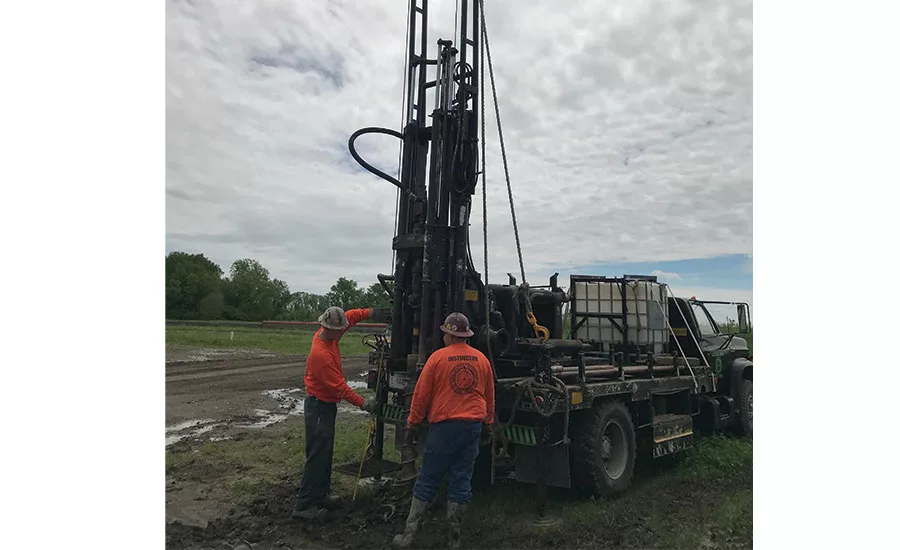
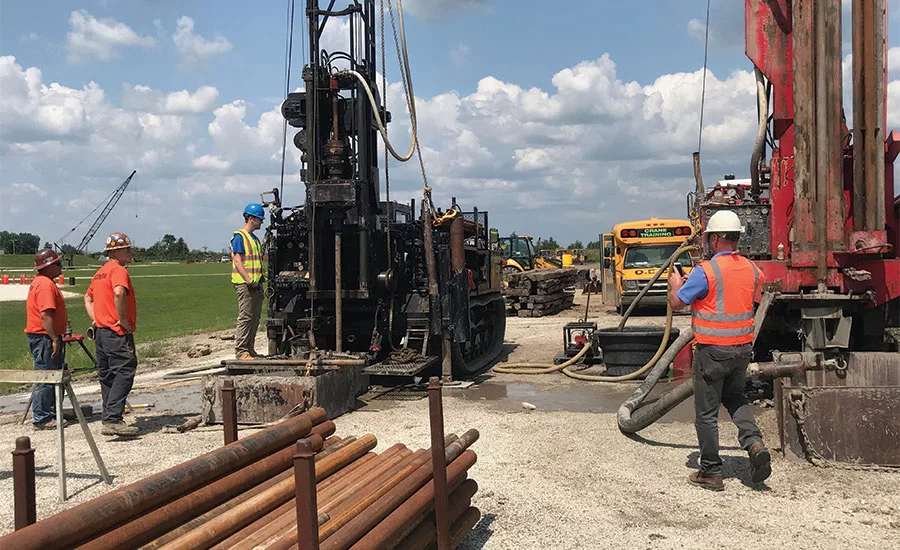
Hydro Field Course students benefitted from hands-on drilling instruction, which will help them as they pursue fields where they will interact regularly with drillers.
Source: Brock Yordy photos
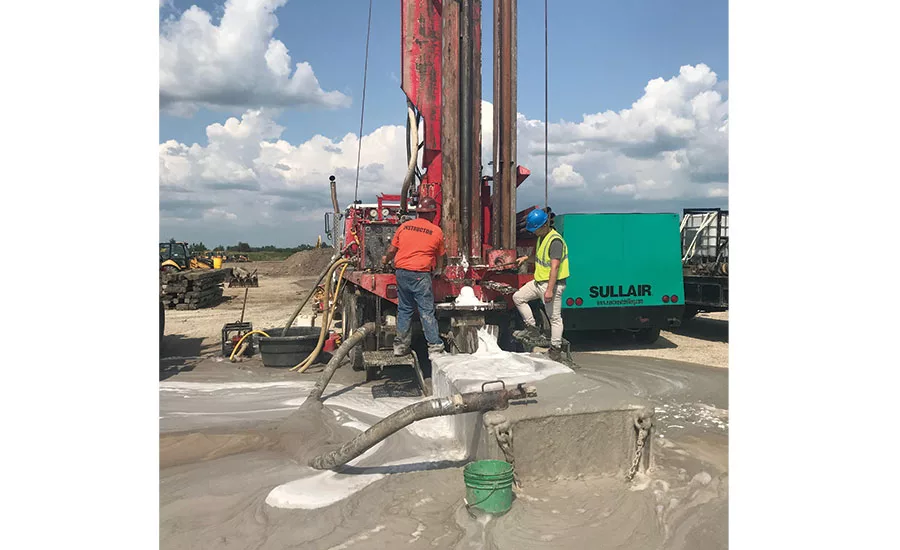
Why do you drill? Is it to provide water for a family? Is it to find a precious resource like oil or gold? When I ask this question to drill crews all over the world I get similarly themed answer of, “to hit the target zone.” However, when I ask my scientist friends — a geologist, hydrogeologist or geotechnical engineer — the same question, the answers vary, but with one similar goal in mind: “to better understand the subsurface.”
As a community of drillers and scientists, we drill to discover the unknown. That unknown could include reaching a confined aquifer or defining the depth of competent rock for a structure, but the fundamentals are the same: to discover and extract information. A successful project starts by finding common ground — or, better yet, common soil — between driller and scientist.
Lost in Translation
Common ground starts with effective communication. The geologist and driller working together have to be able to engage in discussions regarding full expectations for the project. The conversation begins to fail when one or both sides of the drilling venture believe that they know the best process to complete the project. Sadly, this situation is widespread in our industry, and it is rooted in a lack of trust.
The dynamics of field experience versus academic experience can be exciting. A driller believes their education from the school of hard knocks is the only way to learn the industry. Years of good and bad experiences in practical “field” school translate into invaluable knowledge. To a scientist, drilling is often viewed as a process where the drill crew knows what’s happening downhole while all visitors on site are left in the dark. Engineers are concerned about losing valuable information because the drill crew does not have the same level of education as them, therefore missing key indicators that could impact project success. The dynamic increases in complexity with both parties unable to question each other out of fear of looking ignorant to the drilling process or science required for project success. We can overcome these failures through candid discussions that lead to collaboration and alignment of project goals.
Collaboration
Proper collaboration starts by recognizing the expert skills required by both parties. We need the expert skills developed by a drill crew working complicated projects who love knowing that they completed a job deemed impossible. The project requires a passionate geologist who has worked in the lab and the field, who relishes the opportunity to be muddy standing next to the drill crew waiting for the following sample to be retrieved.
Sometimes, the level of passion can be one-sided or not at all. These projects allow the opportunity for the most growth. Understanding how to collaborate with an individual that does not want to is an expert skill required by both driller and scientist. I have developed a core list of questions for these difficult situations. I start by asking, what is the project’s ultimate goal? Next I ask, what is today’s goal? As a driller, I explain to my supervising engineer my process for completing the daily goal and, ultimately, the project goal. I follow that up with, will that work for you?
As the supervising scientist on site I ask my drill crew, what site concerns do you have for completing the project? Next, I discuss the project goals and ask how we can complete the job safely and successfully.
I like to start the collaborating process before equipment is onsite; however, sometimes it must be the day both parties arrive to start the job. In a situation when I encounter an individual that completely refuses to contribute or collaborate, I stick to my core questions and continue to work through the unfortunate situation. I also note in my project book whether, if given a choice, I would work with them again. The more projects I complete, the larger my Rolodex of great partners I want to work with on future projects.
Immersion Field Camp
Great drilling companies and engineering firms find each other on projects and then continue to work together in the future. A new driller starts as a helper and works his way up to driller. A new driller has a crew to work with that went through the same process.
A new geologist, however, might have a colleague on site, but there is a good chance they will be alone with a drill crew. The question I get most often from young geologists and hydrogeologists is, “Where can I find good field experience with drillers?” I tell them about technical schools around North America that teach drilling, as well as how to interact with a geologist. A few field camps take geologists and hydrogeologists out to drill sites to spend a day or two watching and working with drillers.
Recently, Tom Howe and I decided to take the Western Michigan University Hydro Field Course cross training to the next level. Howe is an instructor at WMU and co-director of the course. We contacted expert trainer Dave Bowers at the ASIP Local 150 training facility in Wilmington, Illinois. Dave accepted our request and set up a full 10-hour day of drilling immersion for our field camp students.
The WMU Hydro Field Course (HFC) students started their day in the classroom with Bowers discussing the importance of gathering information. He focused on how to interact with drillers to achieve project success effectively. Next, he explained simple mistakes that occur on geotechnical projects that seem inconsequential at the time, but can have a significant impact on a project — either keeping it from getting started or delaying it. He spoke about the unique opportunity of working with a union training facility, that it gives students the perspective to understand how crucial geotechnical investigation is to the rest of the operating union’s workforce. Finally, he spoke about the importance of having passion for the job and how it allows the opportunity to build lifelong bonds and friendships.
Bowers’ classroom lecture was a fantastic opportunity to learn and ask questions. Next, we headed into the field to retrieve samples from several drilling methods and rigs.
The classroom portion prepared the field camp students for the field. However, it didn’t prepare them to meet Bowers — the driller — and fellow driller Derek Good. Stepping onto the jobsite, it was quickly evident that the students were not in a classroom, and it was time to drill. First, Bowers asked students to do the equipment and site safety check. The activity allowed students time to get familiar with the equipment and evaluate the risks of each drilling process. The first rig was set up to do hollow-stem auguring. Bowers and Good walked students through the process of auger installation, hammering a split spoon and sample extraction. Bowers continued to hit home the importance of proper blow counts and sample retrieval. The students had the opportunity to evaluate samples and test the competency of shale samples. Next, he showed the students solid-stem auguring and allowed the students time to evaluate the difference in boring methods.
We need trust to grow as an industry into a space where extensive academic education meets years of field experience.
After auguring, Bowers and Good showed the students wireline coring. The goal was to allow the students to understand the full process from coring to core barrel extraction, and opening up the barrel to evaluate the full 10-foot sample. Bowers allowed students to assist him with drilling and extraction so they could get hands-on experience. Howe walked the students through proper sample evaluation and boxing up the core. Many of the students could not believe the complexity of the drilling process.
At the end of the day, Good and I showed the students air rotary, foam drilling and down-the-hole hammer drilling. The air-rotary demonstration allowed students to evaluate drill cuttings as they came up the hole in various sizes. The students were able to take rotary drilling solids and compare them to cores they had evaluated on the coring rig. Finishing the day with rotary drilling gave the students the proper knowledge to understand why we choose a specific drilling method. It also showed them that the process to drill could take anywhere from several minutes to a full day to achieve desired depth.
It is invaluable to take student scientists into the field to show them multiple methods for sampling and drilling. It allowed the HFC students time to work in a drilling situation that didn’t have a set agenda or significantly high stakes that require precise execution. We need trust to grow as an industry into a space where extensive academic education meets years of field experience. To have trust, we must share days in the field where the only wrong question is one never asked and where everyone learns that a driller shouts on a jobsite because it’s loud — not because he is mad. Dave Bowers, Derek Good, Tom Howe and I created an immersion course into drilling methods that gave our students the confidence to work successfully in the field.
Looking for a reprint of this article?
From high-res PDFs to custom plaques, order your copy today!





